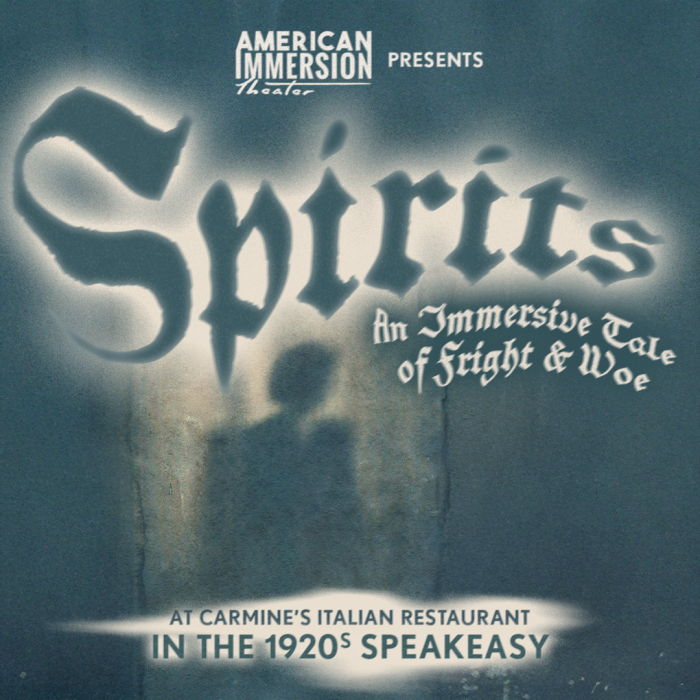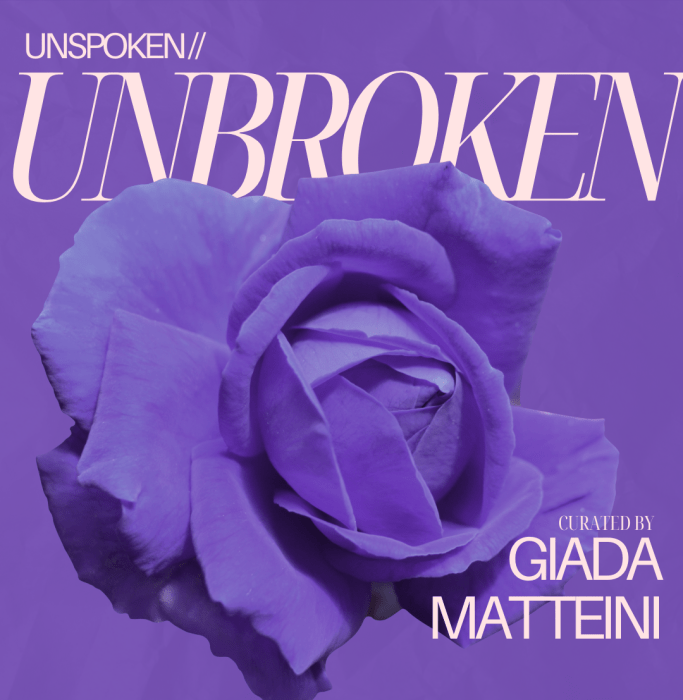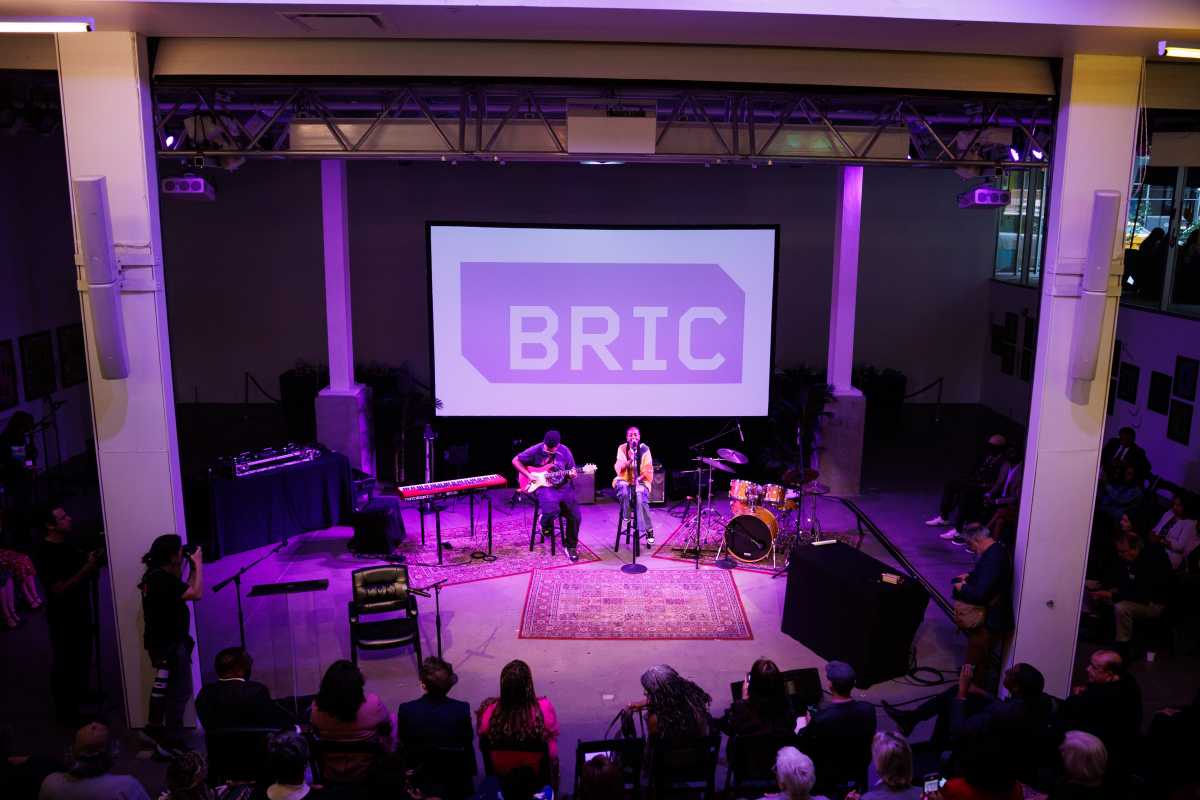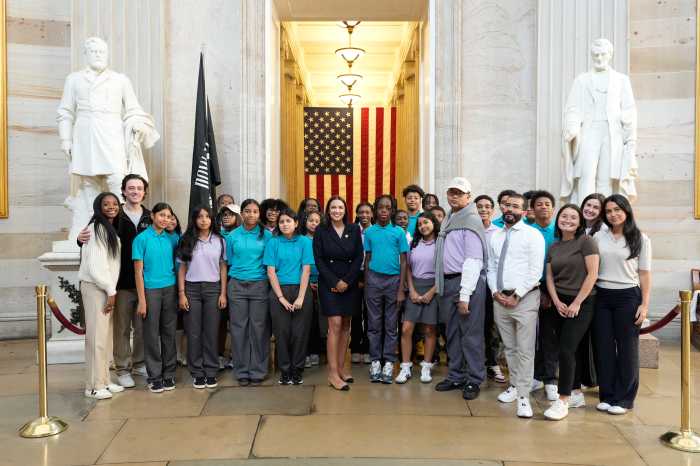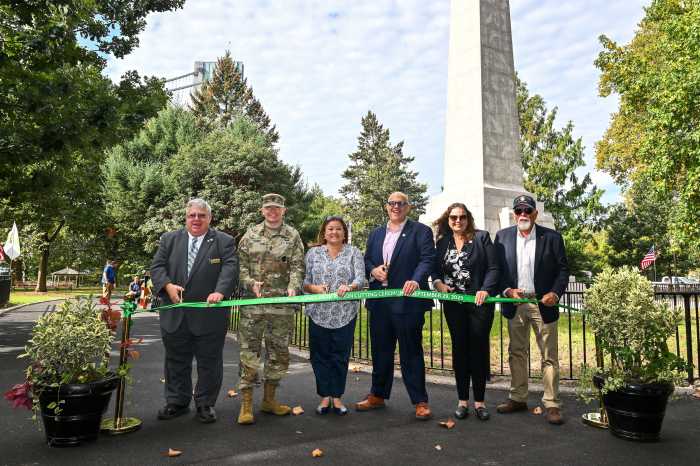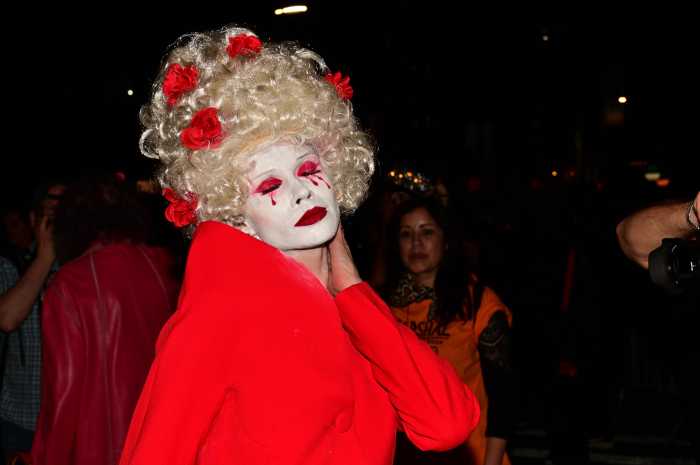By Lincoln Anderson
Villagers traveled north of 14th St. last Thursday to Connolly’s near Times Square to attend “Bards for St. Brigid’s,” a benefit to raise funds for the legal defense effort to save historic St. Brigid’s Church on Avenue B from demolition.
So far, the fight has been waged by the Committee to Save St. Brigid’s, a group largely made up of the Puerto Rican parishioners who held services at the church on the east side of Tompkins Square Park until a few years ago, when a crack on one of its walls rendered the building dangerous, according to the Catholic Archdiocese of New York. The archdiocese more recently dissolved St. Brigid’s parish and reportedly now plans to reuse the site for some sort of church-related facility.
Although the East Village is no longer an Irish neighborhood as it was 158 years ago when Irish boatwrights built St. Brigid’s, Irish-Americans are now at last rallying to the cause of trying to save this “famine church” of the Lower East Side — one of the churches built to serve the waves of Irish immigrants fleeing the great potato famine.
Paul Dougherty, a video editor who lives in the East Village whose grandfather worshipped at St. Brigid’s, organized last Thursday’s benefit, along with Larry Kirwan of the Irish rock group Black 47 and Mary Ann Pierce, a friend of Dougherty’s who is a Webcaster from the Upper West Side, who sold the tickets online. Six hundred people bought tickets at $20 apiece, St. Brigid’s T-shirts were sold for $25 each and $17,000 in total was raised.
It was an evening of readings — and song — interspersed with poignant remarks about St. Brigid’s. The readings formed a mosaic of the Irish-American experience in all its many facets, from the Troubles in Ireland, to Bobby Sands and the hunger strikers, gays’ efforts to march in the New York City St. Patrick’s Day Parade and just ribald humor.
“The cause of saving St. Brigid’s is not about saving the Irish past and what we came through. It’s where we’re going,” said Pete Hamill, before reading a chapter from his autobiography. “It stands as a symbol for the Chinese and Jews and Italians and Latinos,” Hamill said of St. Brigid’s.
Carmel Quinn, the singer and storyteller, mockingly referred to Cardinal Edward Egan as “Edward Scissorhands,” the moniker he earned in Bridgeport, Conn., before he came to New York.
“God almighty, what’s wrong with the cardinal?” she asked. “God knows, he’s got enough.”
Anne McGuire of the Irish and Lesbian Gay Organization said, “I hope that St. Brigid’s is saved because I really don’t want another N.Y.U. dorm in the East Village.”
There were cheers and someone shouted out a “Yay!” of agreement.
Malachy McCourt, who is running for governor on the Green Party ticket, read an uproarious story from his memoir, “Monk Swimming” about turning the tables on an annoying coat-checker by stripping naked and then putting his overcoat back on before checking it. Then he broke into the traditional courting song “Go, Lassie Go,” and suddenly the whole place was singing along with him, everyone knowing the lyrics by heart.
And we’ll all go together/to pick that wild mountain thyme/all around the bloomin’ heather/Will you go, lassie go?
“Sing it children!” he called out — probably just as his father did to him and his brothers when they were young, as described in his brother Frank’s Pulitzer Prize-winning book, “Angela’s Ashes.”
Sergeant Conor McCourt, Malachy’s son, who supervises the Times Square police, popped in to see what “seditious acts” his father was up to.
After the four-hour marathon had ended, the event’s organizers and others stressed it’s not too late to save the church. A lawsuit seeking to bar the church’s demolition is currently before the Appellate Court.
“It’s not too late,” said Councilmember Rosie Mendez, who used to attend Mass at St. Brigid’s. “The Bible says: ‘The faith of a mustard seed — anything is possible.’ Mustard seeds are tiny — but they grow. It’s been a couple of years since they closed the church, and we’re still fighting.”
“One man has the power to save this church — and if we can get to him, we can do it,” said Black 47’s Kirwan, a former East Villager who now lives in Soho.
Although an “angel” with deep pockets has recently come forward saying he wants to buy the building and convert it to nonprofit use, some expressed concern at what this might mean for the historic church. Most said they’d like to see St. Brigid’s remain a functioning church, while others also said they’d like to see it become like St. Mark’s Church-in-the-Bowery — a church with an active arts contingent. Kirwan said he’d personally want it to remain a working church, but also become an Irish famine museum.
“The Irish didn’t commemorate the famine, because they couldn’t understand it — how God could do this,” Kirwan said. “They didn’t want to mention it. There were no songs about it.”
He noted his band’s name, Black 47, is what the famine is called in Ireland.
The boatwrights carved their faces atop the pillars inside the church, he added, quite unusual for Catholicism.
“You can actually see the faces of the people that built it,” he said. “We can’t afford to let it go…. What are we going to have there? Some new glass and chrome? Stupid. Is that our monument as modern people?”
Irish famine memorials — “prefab,” Kirwan derisively called them — have been created in Boston and Lower Manhattan, but here on Avenue B is a monument that already exists, he said.
Afterwards, Edwin Torres, a leader of the Committee to Save Brigid’s, said, “I think the event was a success. One of our objectives was to make the Irish-Americans aware of this and I think we did that and also there are now more funds for our legal struggle.”
“Now it’s a citywide, and perhaps a national issue,” added Roland Legiardi-Laura of the East Village Community Coalition of the positive P.R. effect of the benefit. Pierce said she’s going to try to sell the podcast of the event and also an audiotape to National Public Radio to help get the message out.
Dougherty explained he’d like to see St. Brigid’s restored the way the Eldridge St. Project is reviving the Eldridge St. Synagogue.
“It’s a tough act to follow,” he said. “But, I thought, ‘Why can’t we do the same thing?’ Their system is decentralized. Ours is centralized, hierarchical. It’s daunting. They just had to broker a deal with a minyan, the board, whatever. But somehow, something is doable. It’s an uphill battle, but there’s a shot. Even though it’s late in the court process, this is the first time our message has gotten out.
“It just seems foolish to build famine memorials,” he said, “If you’ve got one that’s the real deal.”










